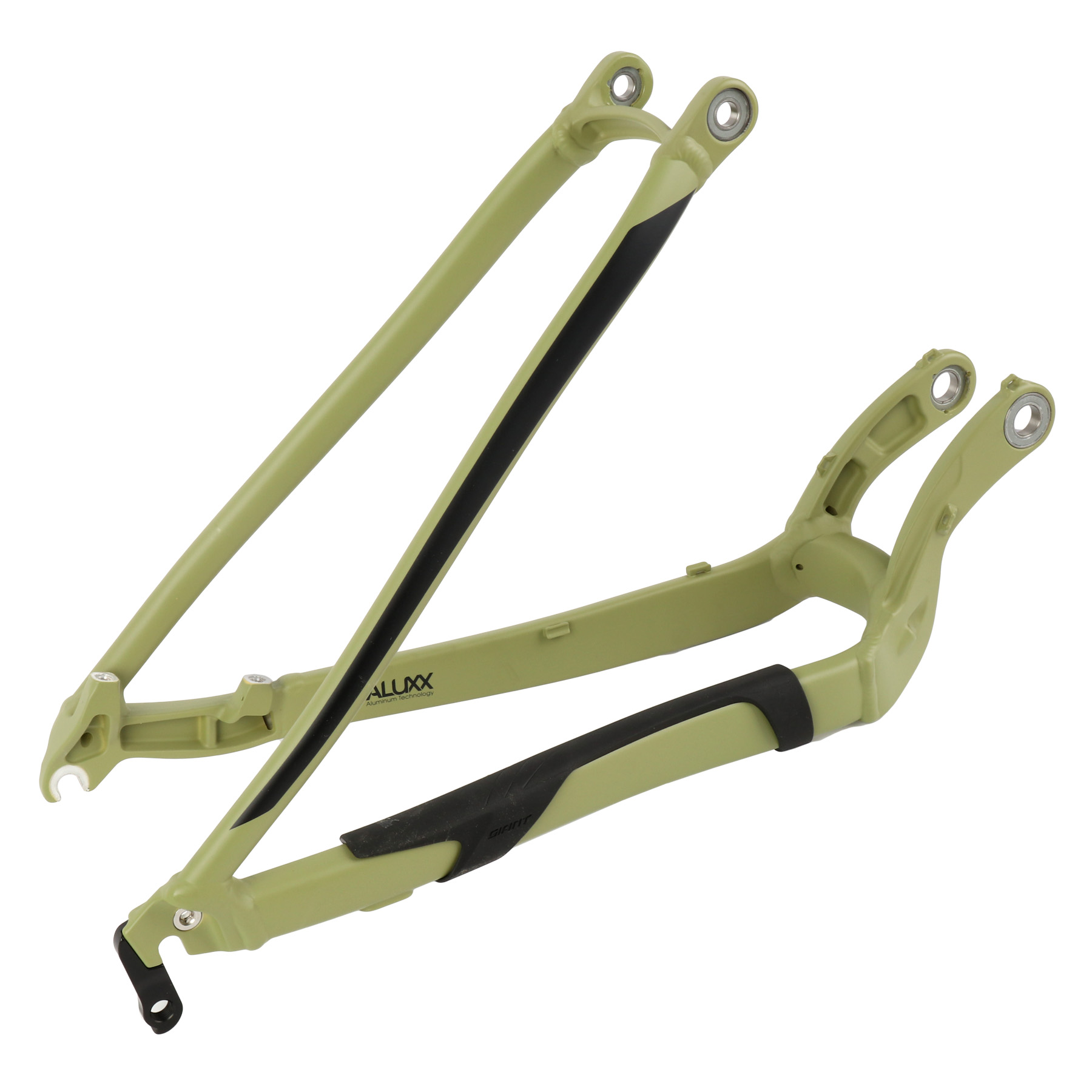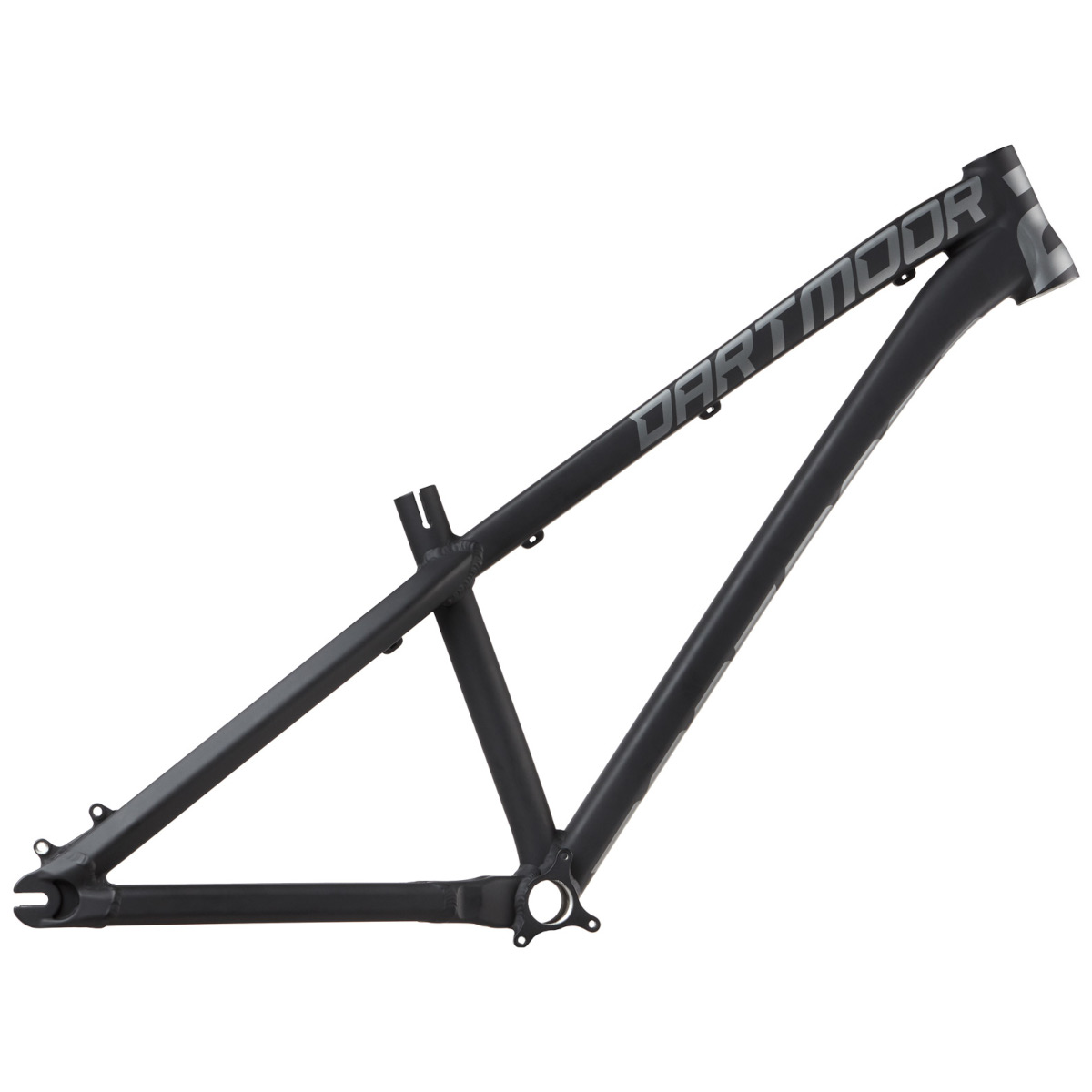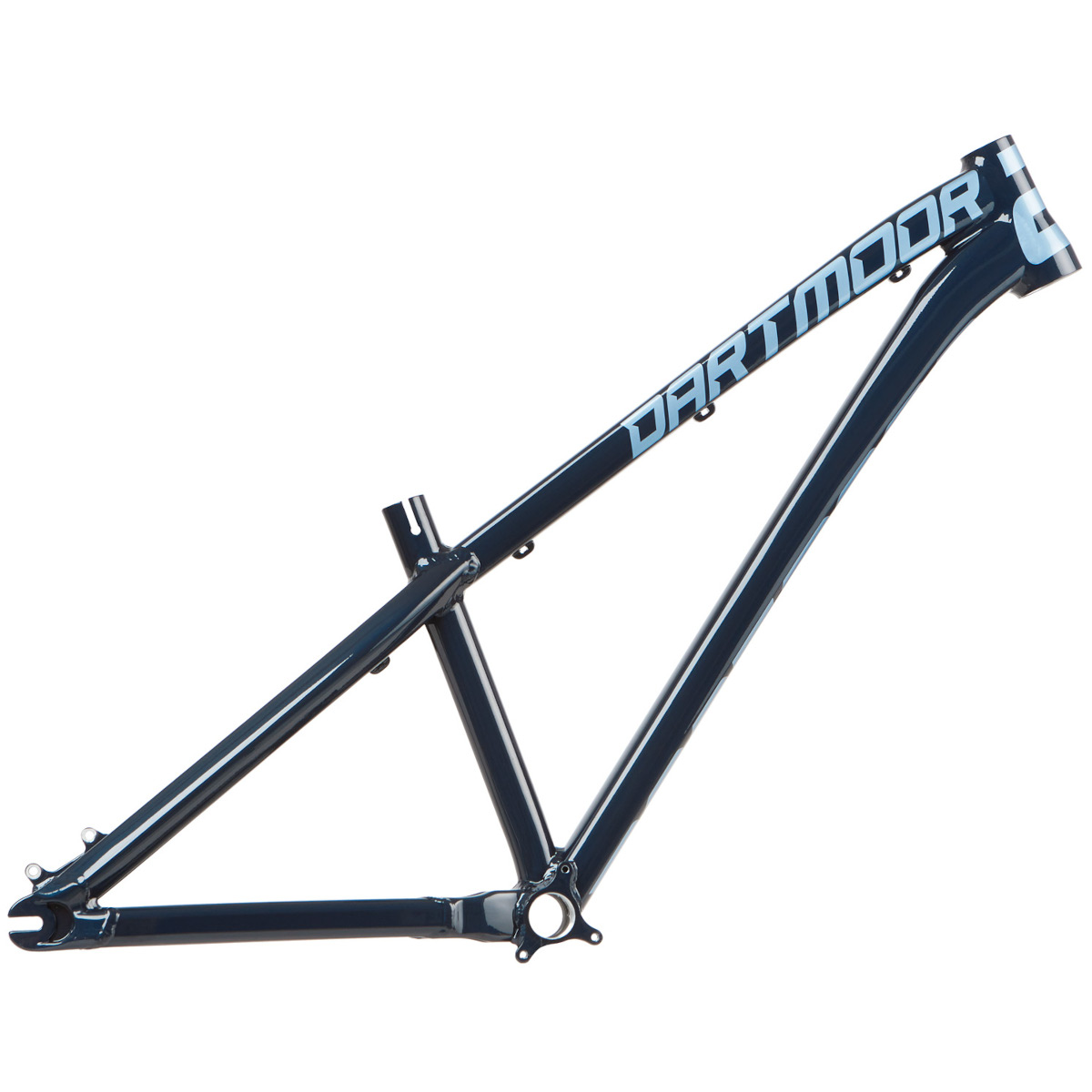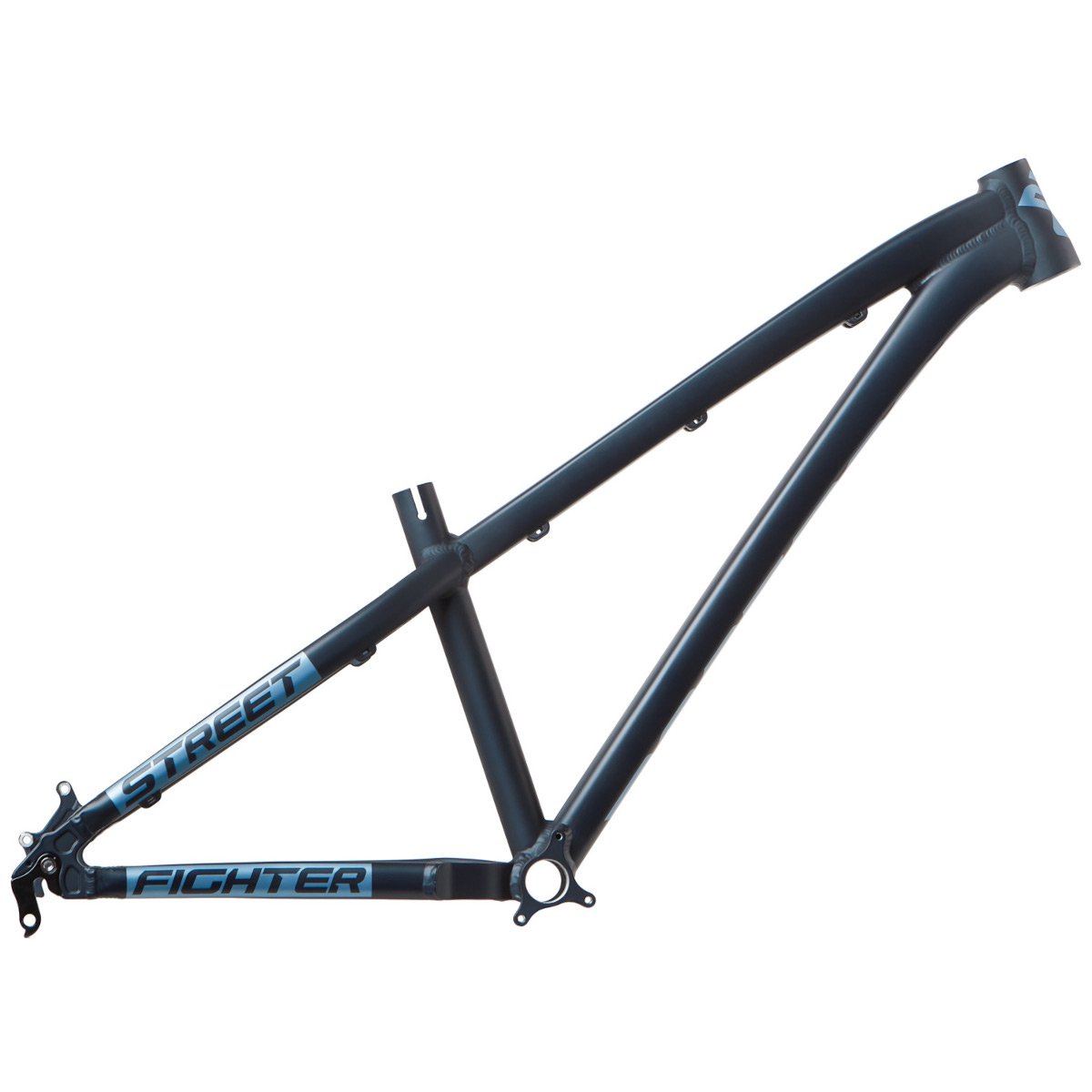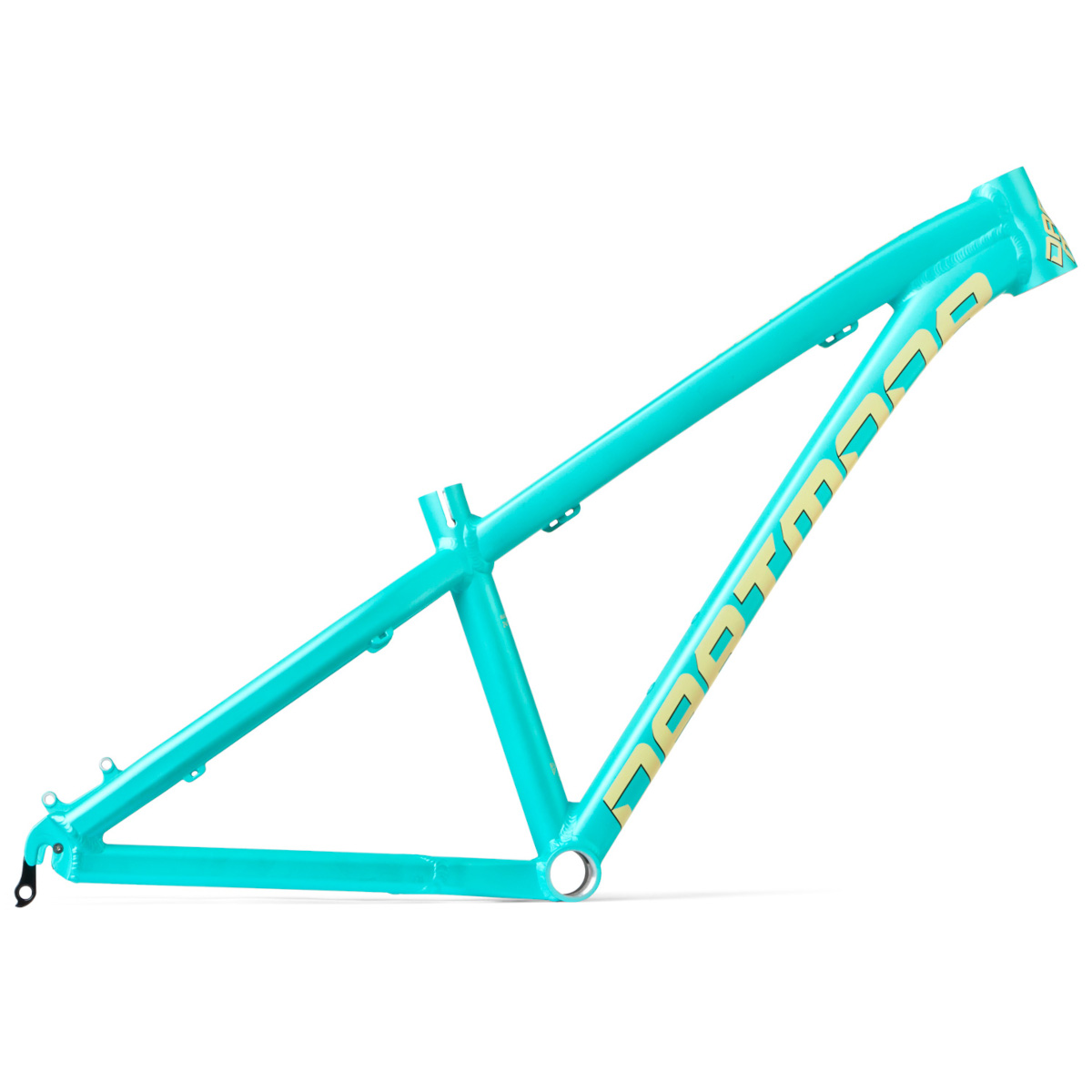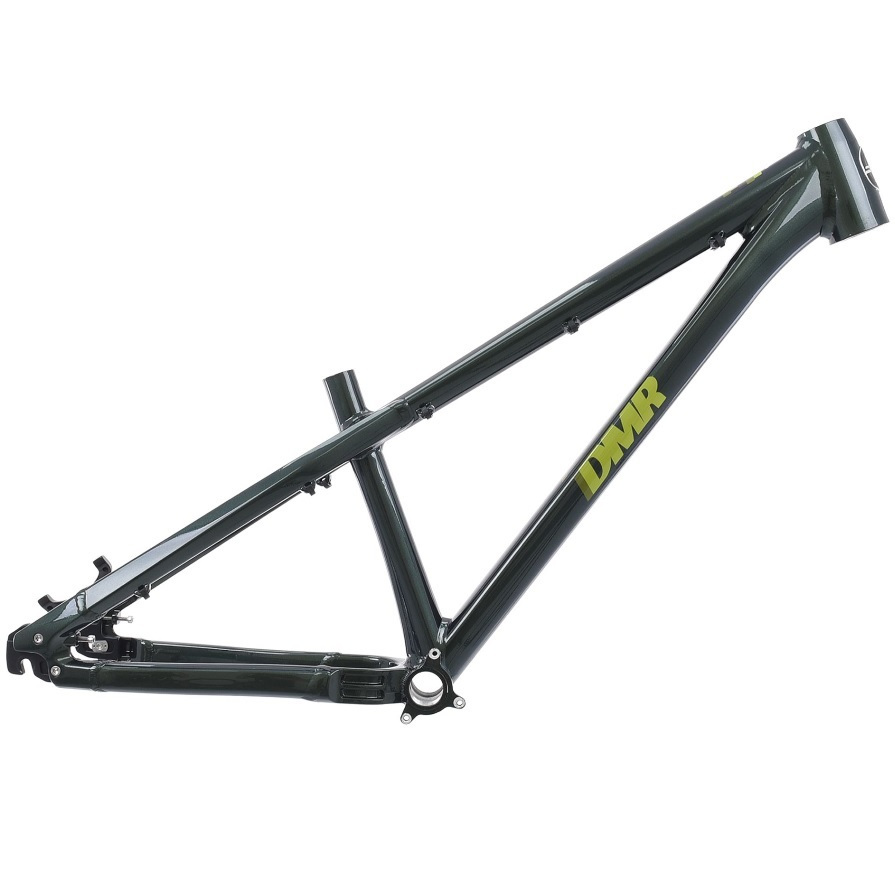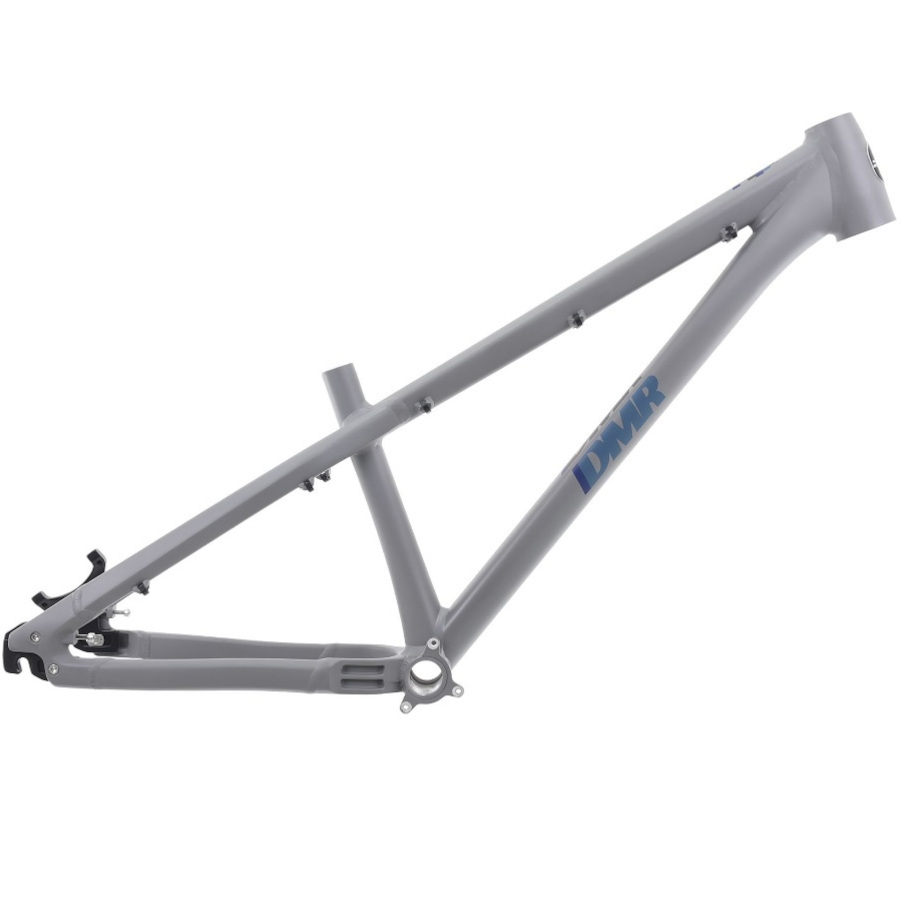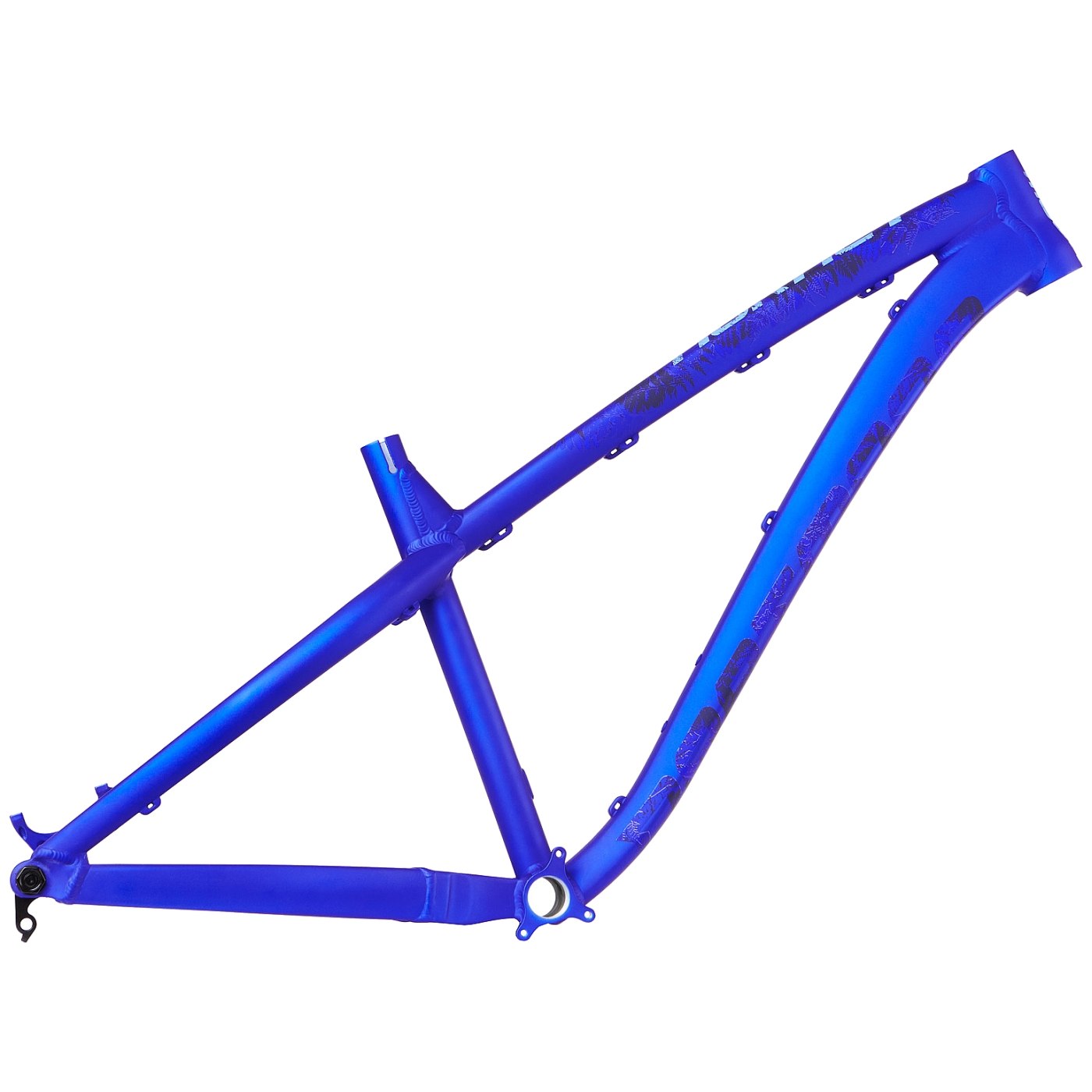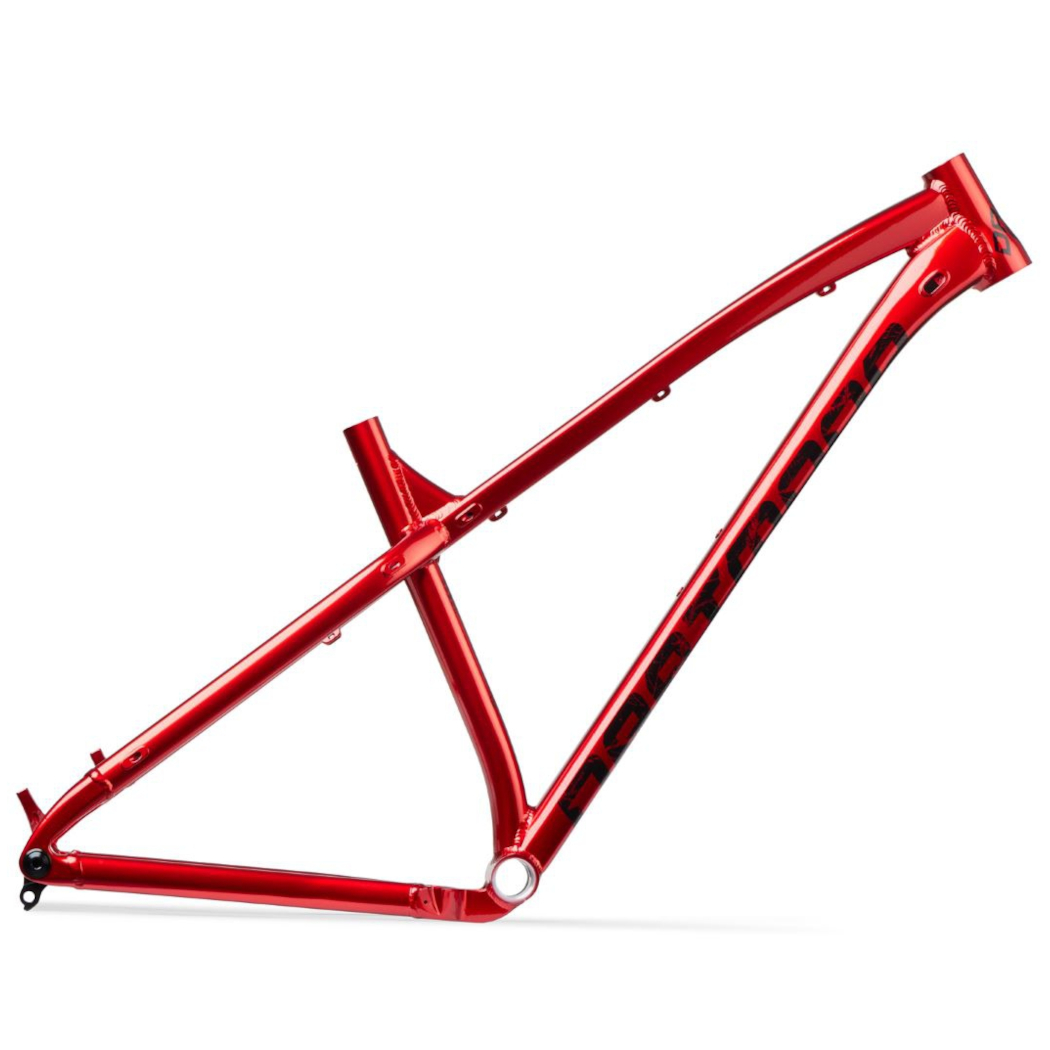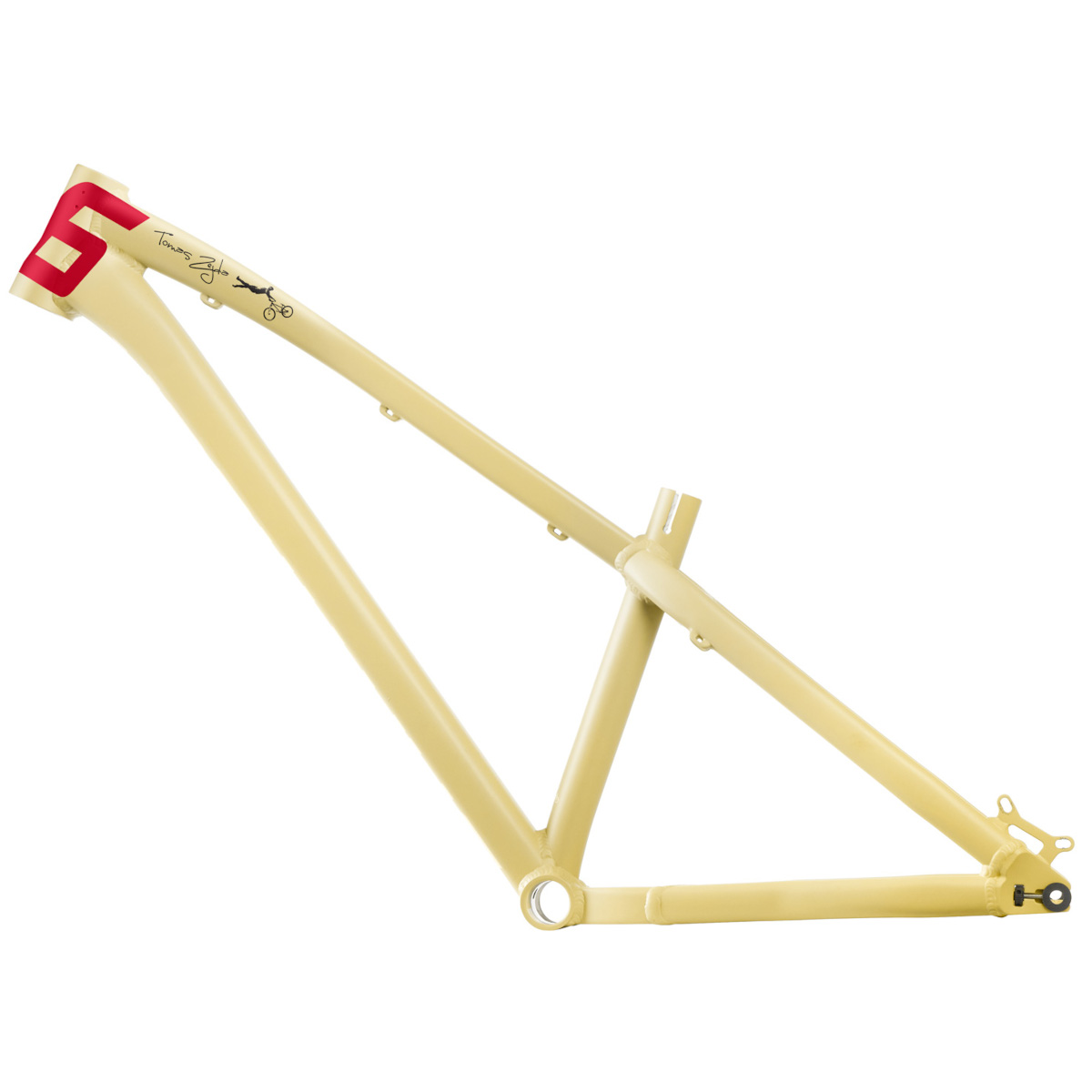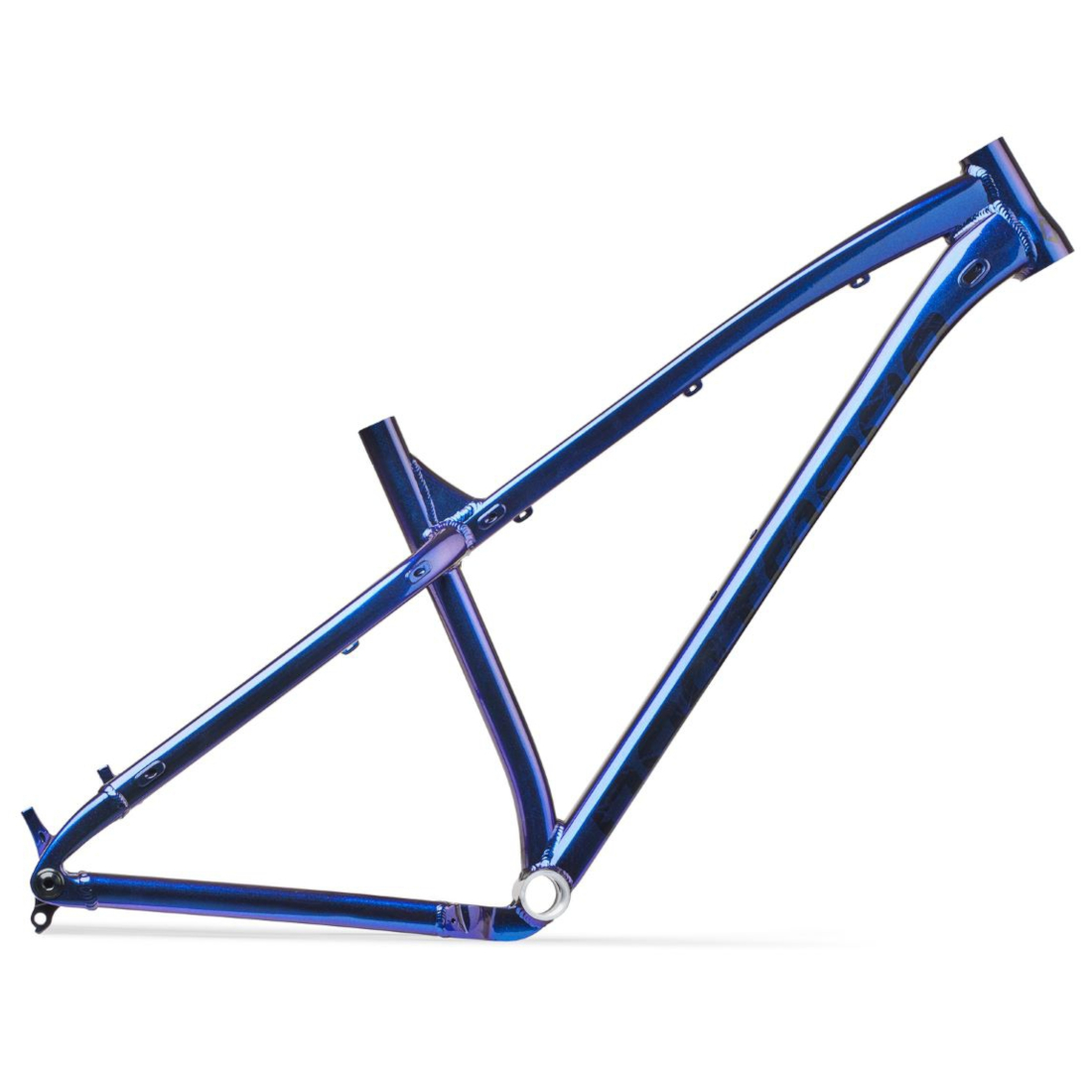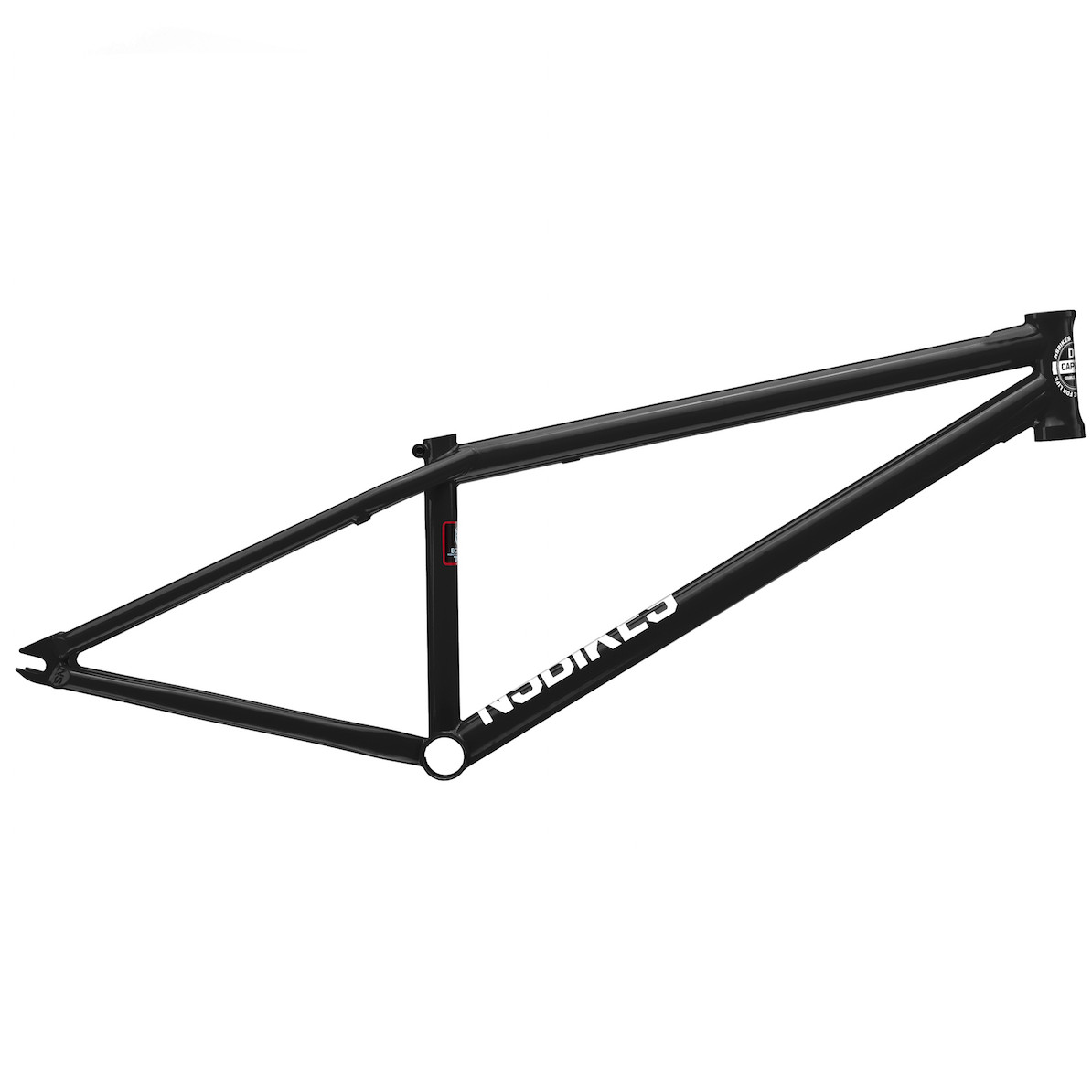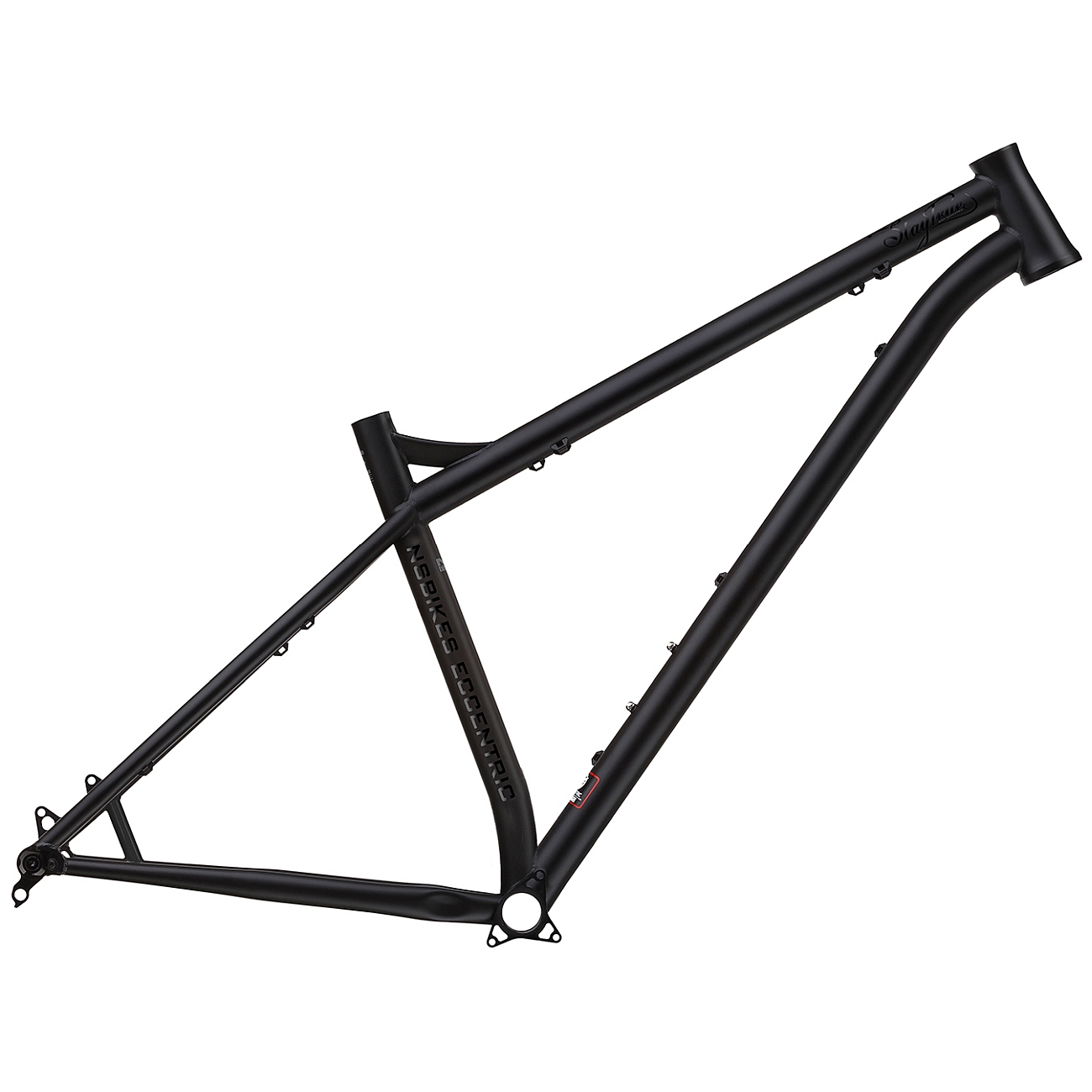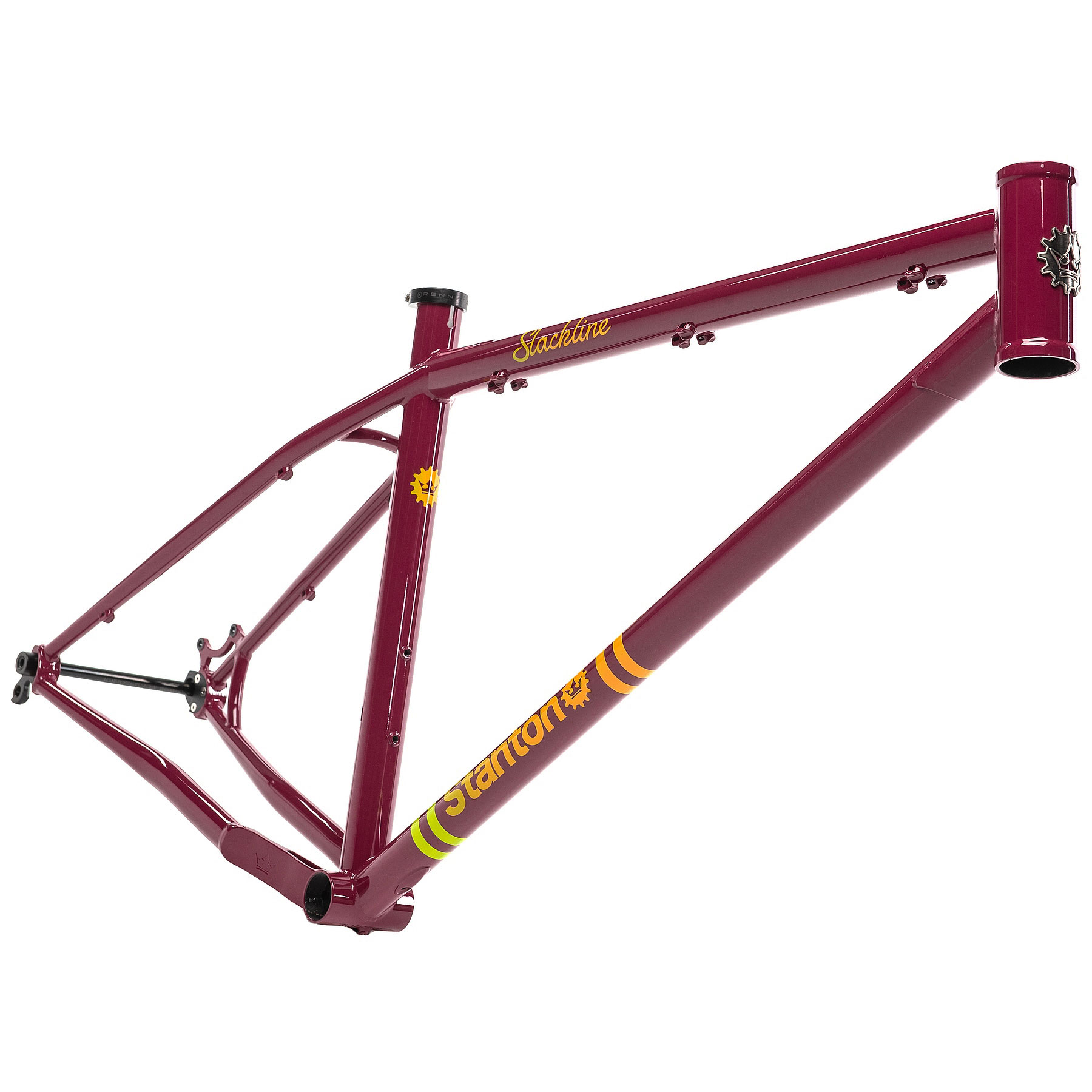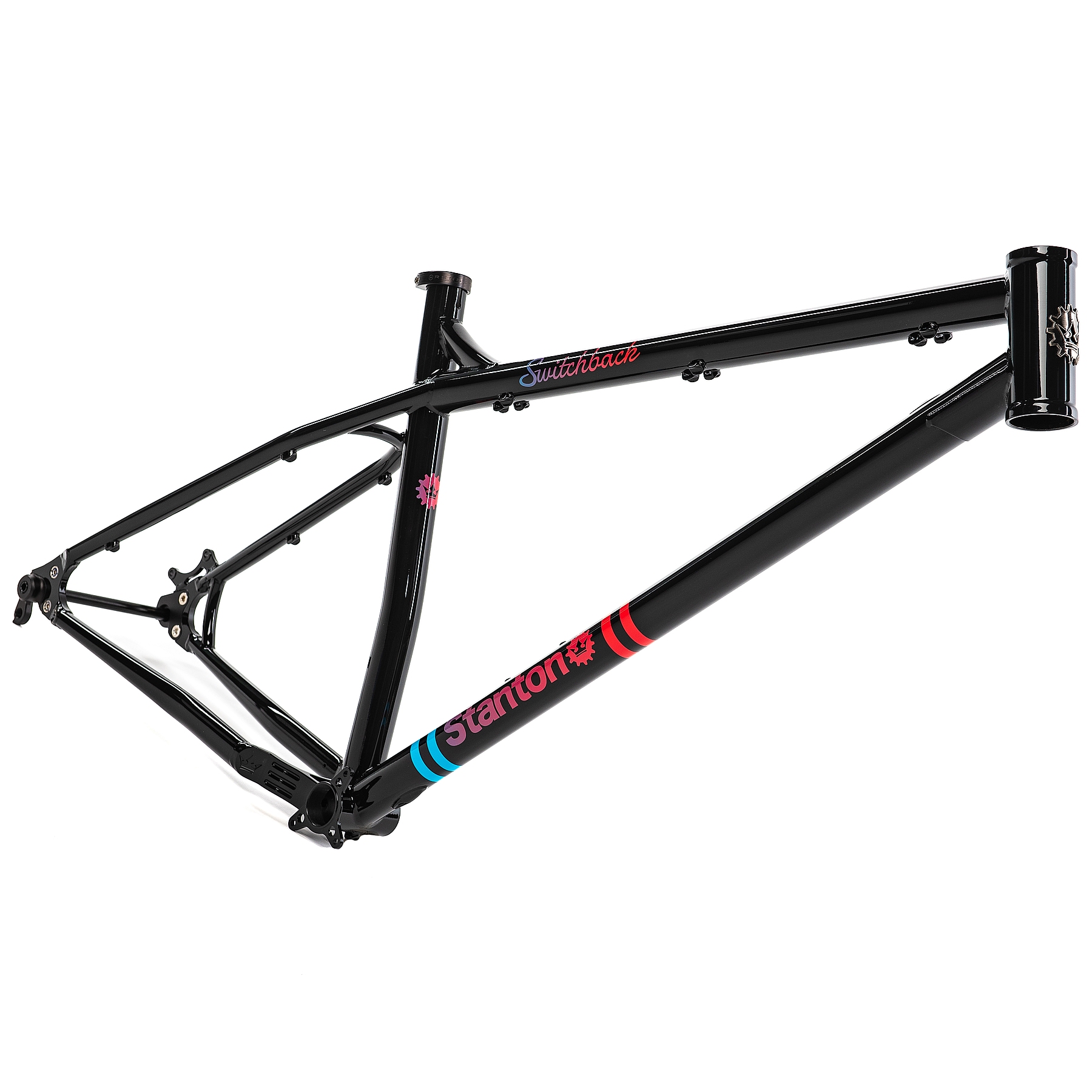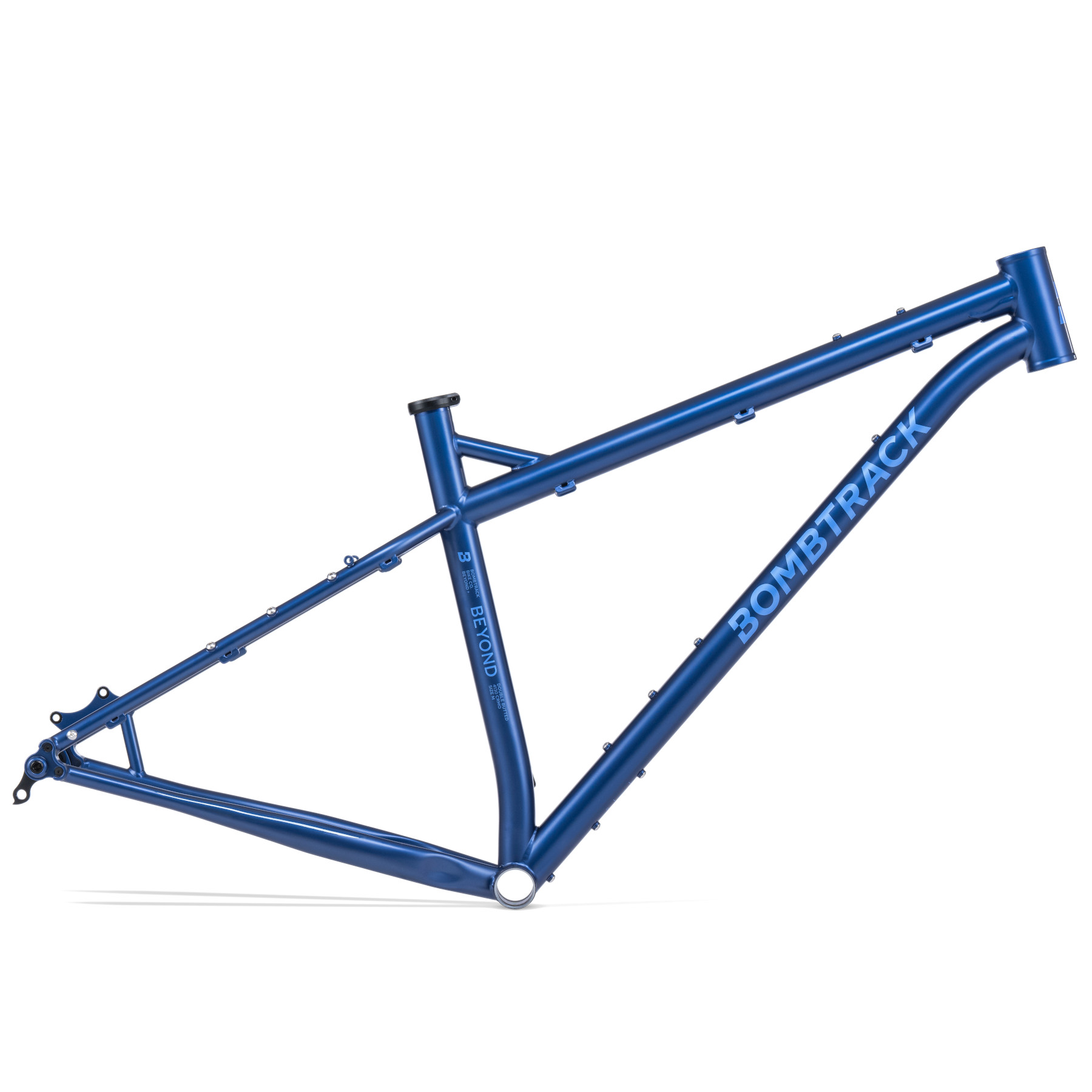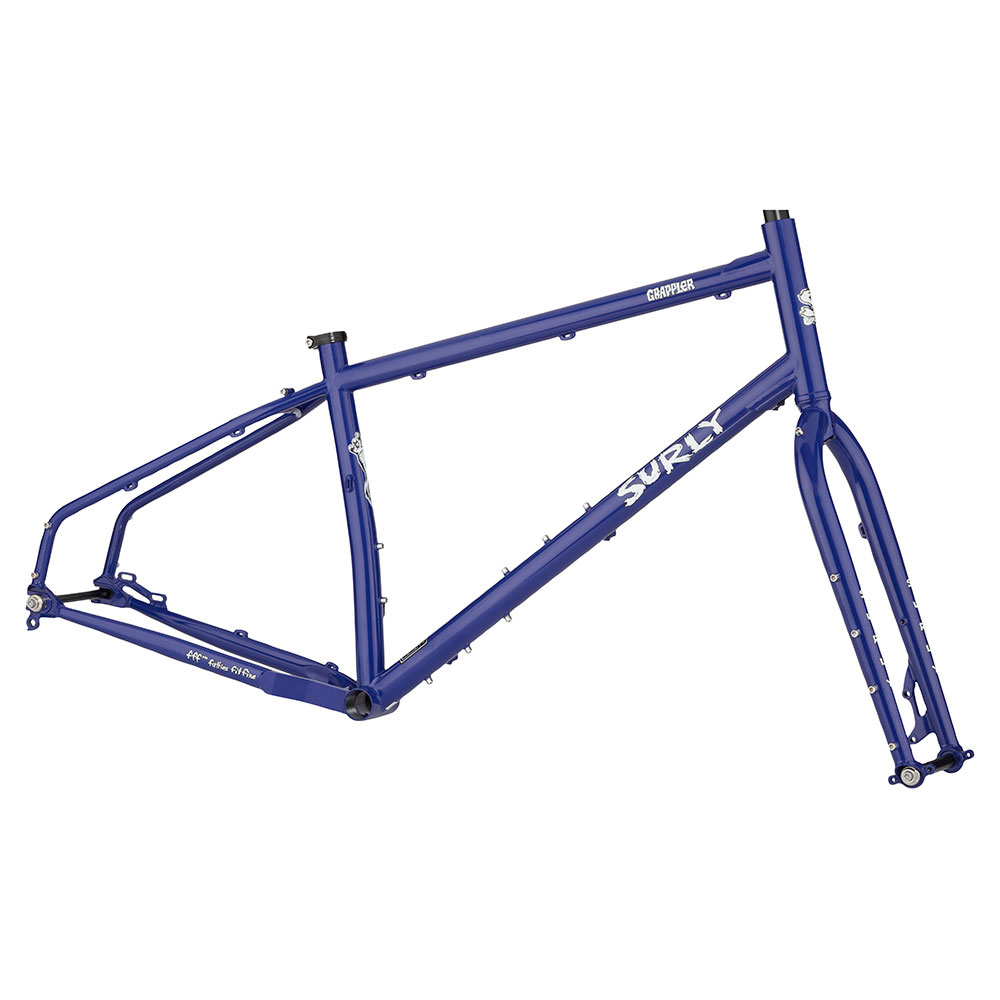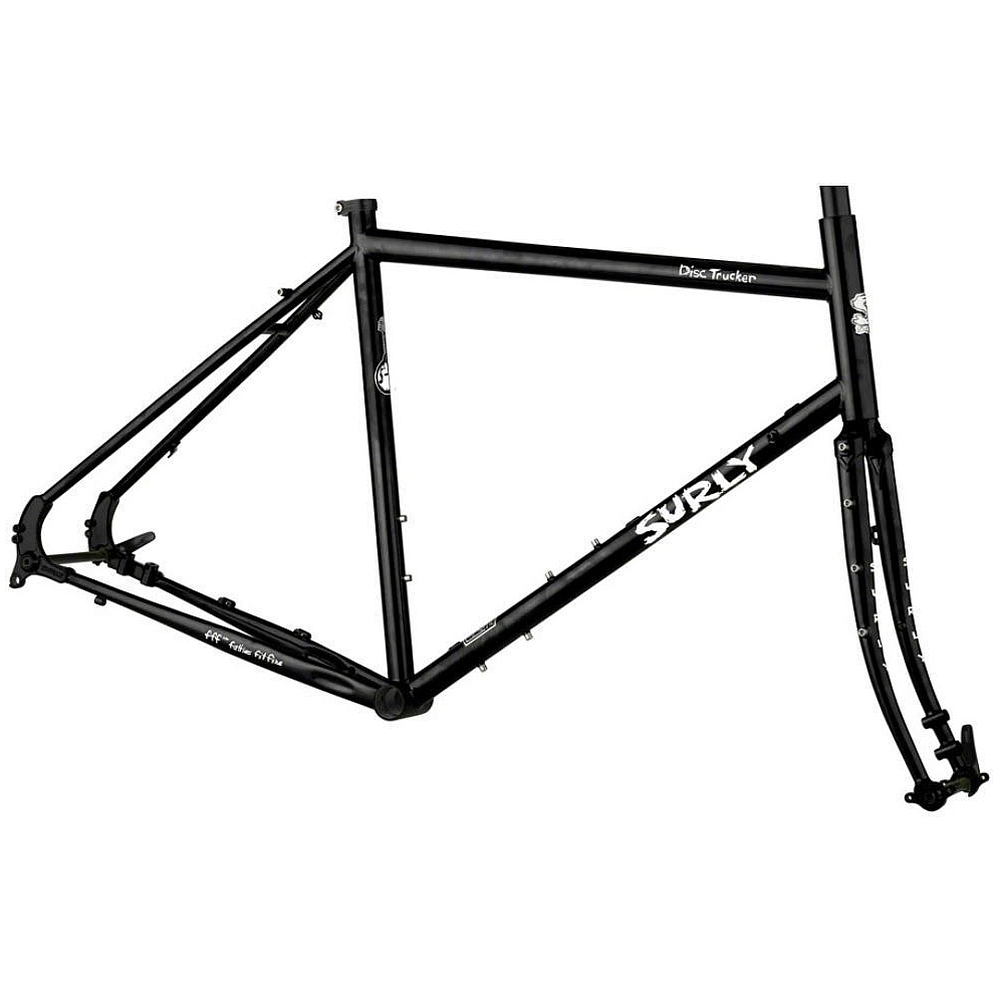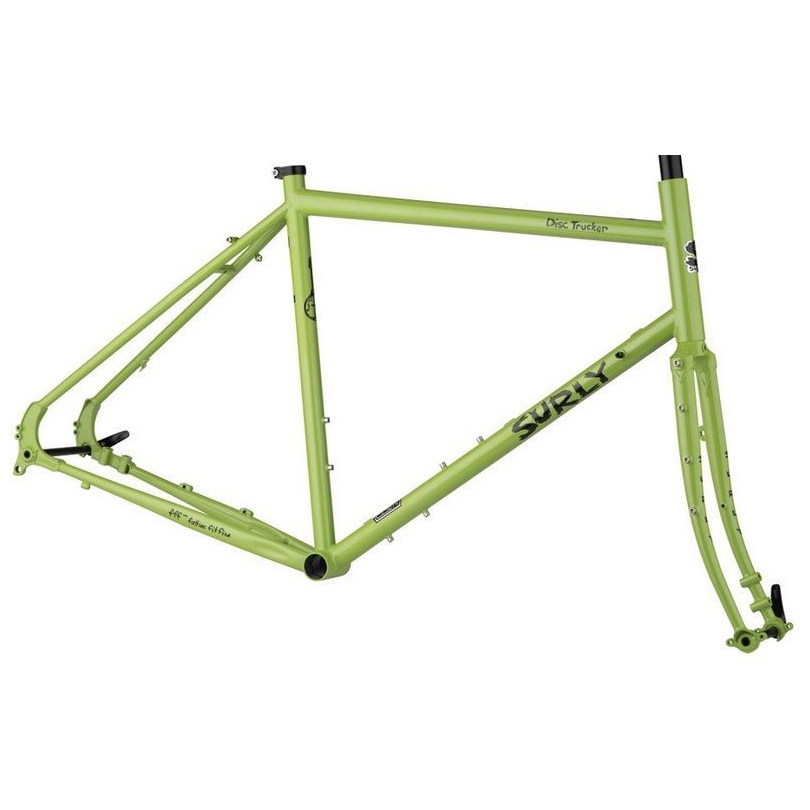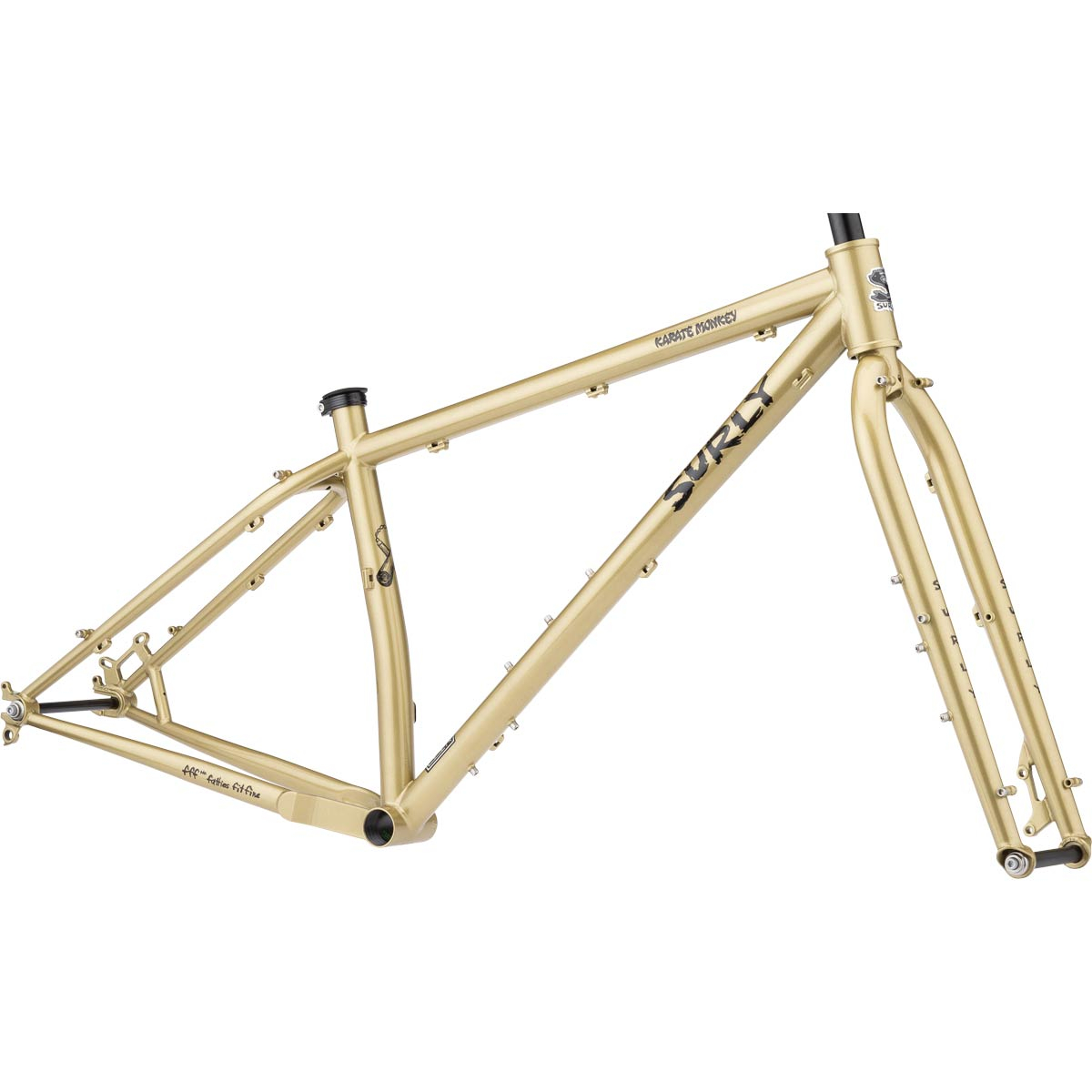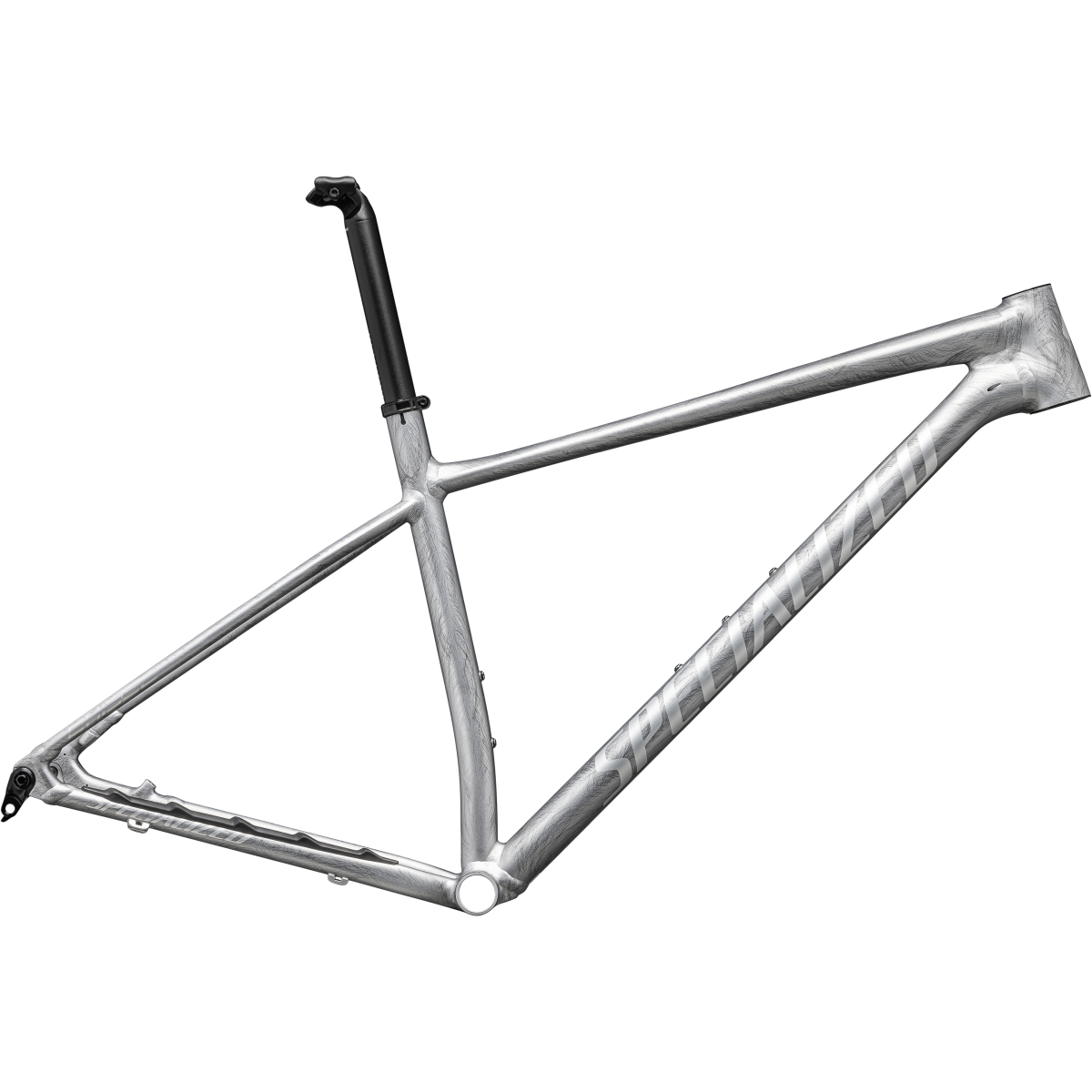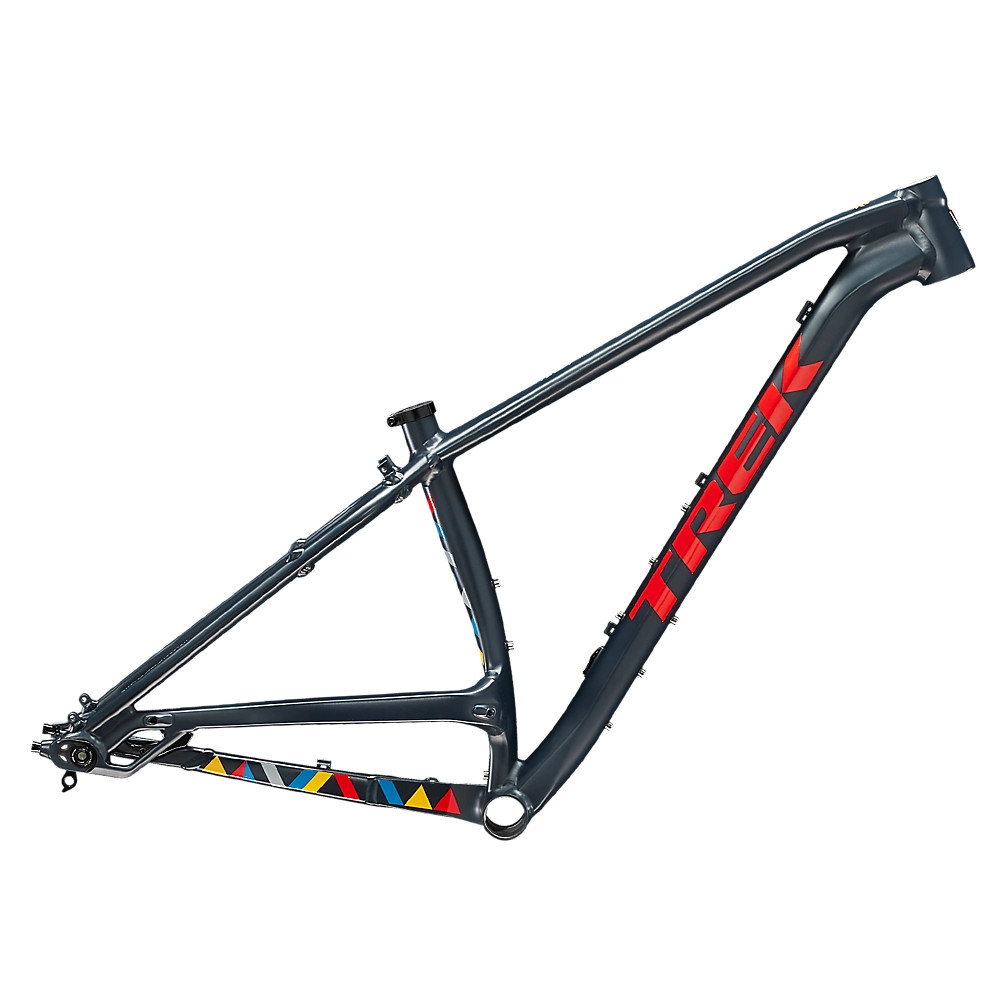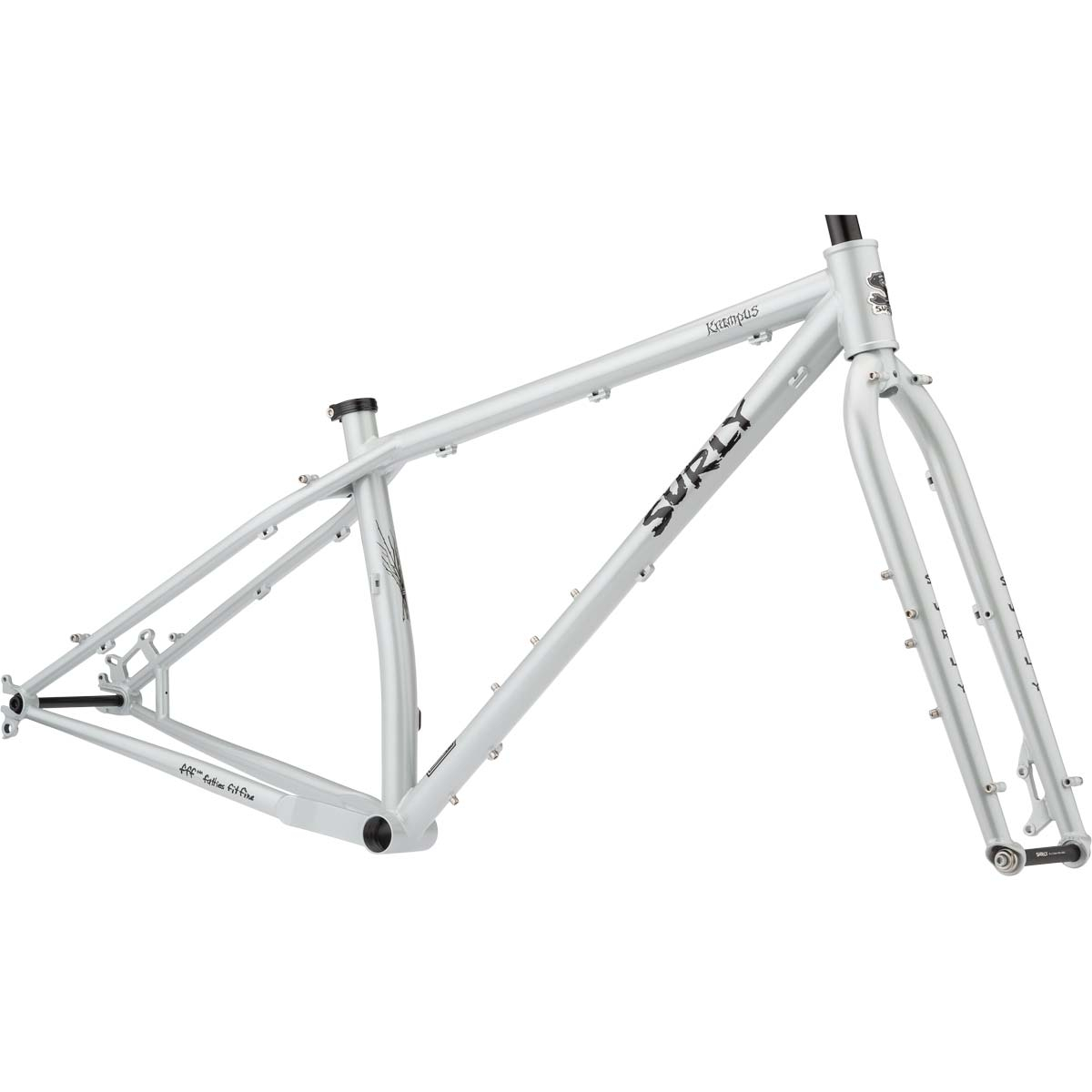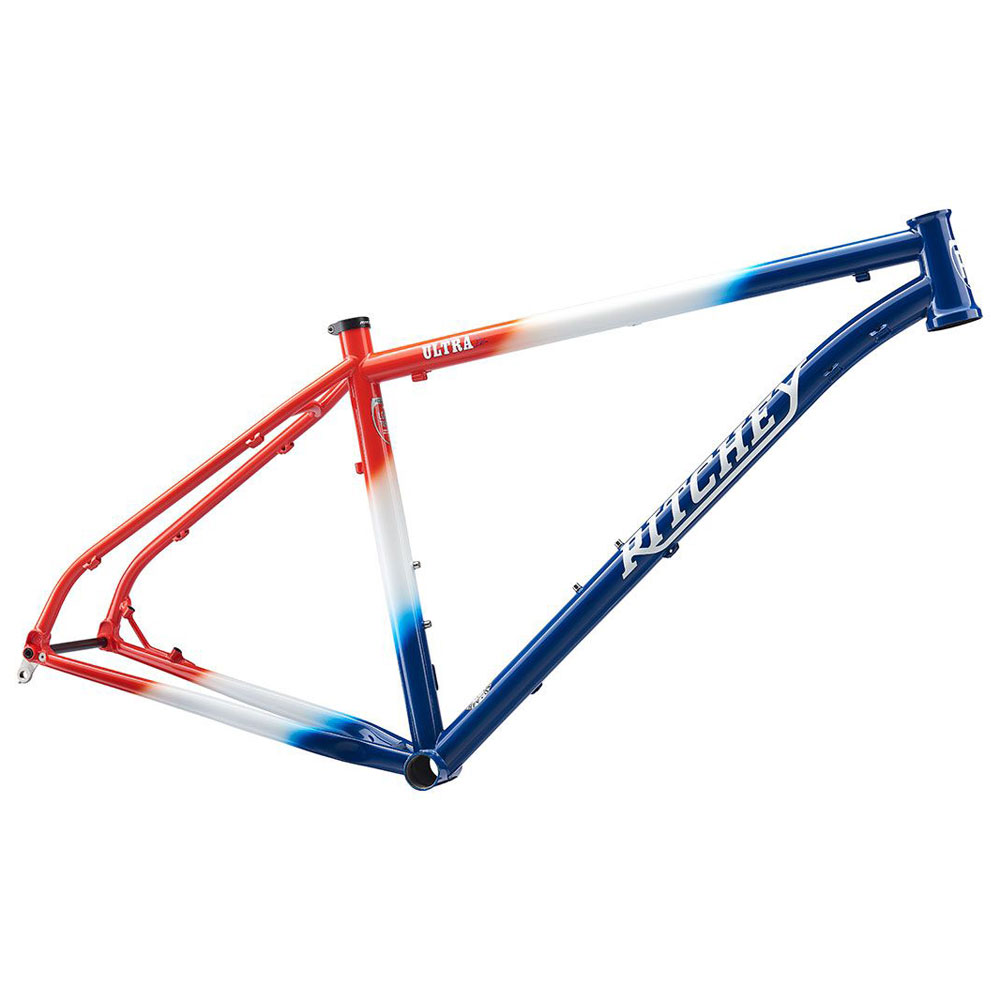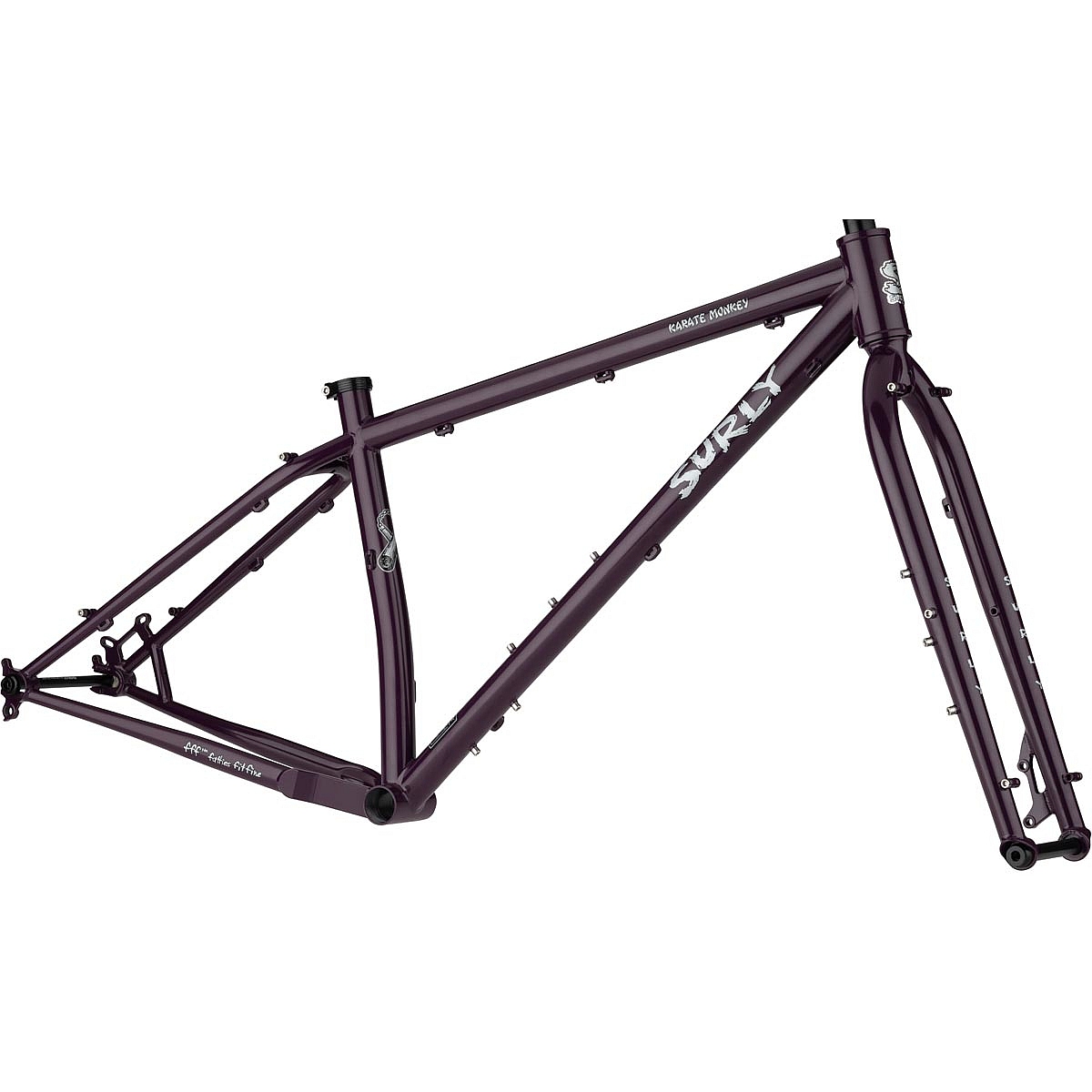The MTB Frame – Base for Your Custom Bike
A production bike just doesn’t cut it for you and you want something more unique? Create your dream build and start with the frame! We’ll help you find the perfect mountain bike frame and give you some hints on what to look for in order for everything to come together nicely in the end. Read more
Metal or Carbon – Choosing the Right Material
When choosing a mountain bike frame the first question is often which material is the best. Carbon fiber and metal alloys are competing for the rider’s favour. Your choice is about finding a compromise that suits your individual needs best. Let’s look at the pros and cons of the different materials!
High-Tech and Performance: Carbon MTB Frames
High-quality carbon mountain bike frames are light and stiff but they come with a premium price tag. High-end performance is key and many riders value the contemporary looks as well.
All-Rounders: Aluminium Mountain Bike Frames
MTB frames made of aluminium alloy can also be light and stiff but they can’t compete with top of the line carbon frames on the scale. For many riders saving the last few grams might not be as relevant though and aluminium frames tend to be more affordable.
Timeless Classic: The Steel MTB Frame
Considering modern mountain bikes, steel is the frame material with the longest history yet it remains relevant. In addition to the timeless aesthetics, steel mountain bikes shine with great durability when taken care of properly. With the right tube-set a steel frame can offer a lively and comfortable ride feel. They tend to be heavier though. Even the lightest steel mtb frames can’t compete with aluminium, carbon or titanium on the scale.
Classy and Durable: Titanium
Titanium mountain bike frames have that certain something. Since titanium is quite resistant to corrosion, frames don’t need to be painted which saves weight and results in the distinct, classy finish. Aesthetics, durability and the ride quality can be compared to steel frames, however titanium is significantly lighter. Since titanium frames are more difficult to build and the metal itself is more expensive to start with, they tend to be pricey.
How Much Suspension Do You Need?
Front and Rear: The Full Suspension Mountain Bike Frame
Full suspension mountain bikes provide more comfort and control on the trails. How much travel is appropriate depends on the type of riding. A downhill bike frames usually features around 200 mm of travel while an XC frame might come with as little as 100 mm. More on that further down. Most full suspension mtb frames include a rear shock so there’s no need to worry about the right length in that case. Suspension travel is usually predetermined, however some mountain bike frames allow some degree of adjustment. Attention should be paid to the recommended fork travel, respectively the axle to crown height.
The MTB Hardtail or Rigid Frame
Mountain bike hardtail frames don’t feature any suspension for the rear wheel. Riding hardtails on trails is a more direct experience and they are less complicated regarding setup and service. When choosing a hardtail mtb frame it is still important to consider the manufacturer’s recommendations regarding axle to crown respectively travel of the fork you want to ride.
They are less common than in the past but mountain bikes without any suspension – rigid bikes – are still available. For easier trails they can be a more straightforward choice requiring less maintenance, making them somewhat popular for bikepacking. Many mountain bike hardtail frames offer the choice to be set up with a suspension fork or a rigid fork with the latter even being included in delivery in some cases. Be sure to check the list of what’s included in delivery.
Geometry and Riding Style
Aside from suspension, the geometry is a crucial factor to determine what type of riding an mtb frame is best suited for. As suspension grows in travel starting from XC and going to trail, enduro and finally downhill, the geometry tends to get longer and more aggressive with skacker head angles. The manufacturer's intended use or riding style is usually a good starting point if you don’t want to crunch the numbers yourself.
Dirt jump bike frames are a bit of an exception as they are almost exclusively small hardtails and use short forks.
Wheel Size
Another important aspect to consider when choosing a mountain bike frame is wheel size. 29 inches, 27.5 (650B) or even 26 inches – they all have certain advantages and downsides. Once you decide, you’ll have to stick with it unless your frame of choice features some sort of flip chip or modular dropouts to accommodate different wheel sizes.
Also, make sure to consider the tire clearance specified by the manufacturer, so your preferred tires will fit the frame.
If you need to run really wide tires, consider a plus bike frame or even a fat bike for tyres up to 5 inches wide.
Standards and Compatibilities
When assembling a custom bike the compatibility of all parts is crucial. The mountain bike frame interfaces with a number of parts, which need to be considered. This is important if you want to use existing components or choose new ones. We have listed some of the important points:
- rear wheel dropouts (spacing and the type of axle)
- bottom bracket – BSA (threaded), Pressfit oder something exotic? Also take note of the width
- headset – external cups (EC), zero stack (ZS) or integrated headset (IS) in the fitting diameter
- recommended fork travel and axle to crown measurement
- seat post diameter and seat post clamp diameter (note that many frames include a seat post clamp in delivery or use some sort of integrated clamping mechanism)
- which type of brake caliper is needed – postmount, flatmount, IS or traditional rim brakes (cantilever bosses)
- does the frame accept a front derailleur?
- chainring clearance – there might be limitations between chainring and the chainstay
- water bottle mount bosses
- internal or external cable routing
- options to mount fenders and a pannier rack
Buy Your New MTB Frame Now at BIKE24!
You’ll find a great variety of mountain bike frames for all purposes in the BIKE24 online shop. Before you place your order you should make sure to know your proper frame size.
Also if you don’t want to build your custom bike yourself, our experienced mechanics can help. Just contact us for an offer.
